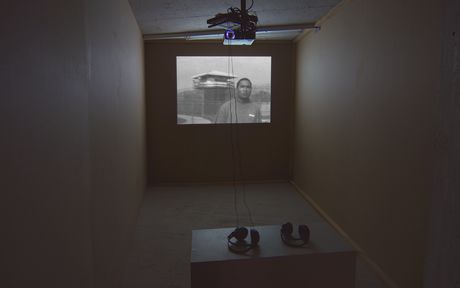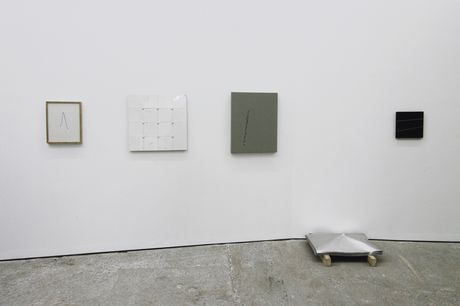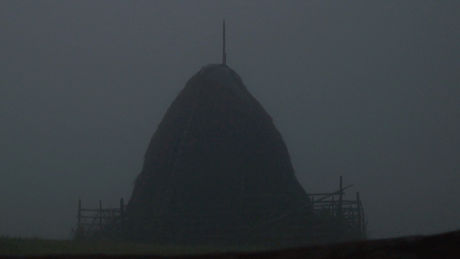Antirepresentationalism 2: Trouble with Realism
Conceptual and Socially oriented Art in Leipzig 1997–2009
Oct 17–Nov 21, 2009
Oct 17–Nov 21, 2009
An exhibition by Alexander Koch and Nikolaus Oberhuber
With Peggy Buth, Famed, Markus Dressen, Andreas Grahl, Henriette Grahnert, Eiko Grimmberg/ Arthur Zalewski, Mark Hamilton, Ramon Haze (Andreas Grahl, Holmer Feldmann), Oliver Kossack, Claudia Annette Maier, Mario Pfeifer, Ulrich Polster, Julius Popp, schau-vogel-schau (Marcel Bühler, Alexander Koch), Julia Schmidt, Tilo Schulz, Tina Schulz, spector cut+paste, Christoph Weber, Clemens von Wedemeyer, Tobias Zielony
Trouble with Realism
ANTIREPRESENTATIONALISM takes up the proposal of the American philosopher Richard Rorty, which states that we should trade in our pursuit for truth and objectivity for our ability to empathize and devote ourselves to social advancement. Instead of worrying about whether or not our representations of reality are correct, we should be working on our sense of solidarity. The first chapter of our exhibition trilogy stated that our images of the past will never be finished, since we keep on redescribing it from changing perspectives. Therefore, history is flexible. The second exhibition TROUBLE WITH REALISM demonstrates the same degree of flexibility with regards to reality.
‘Realism’ is synonymous with the endeavor to grasp something of the world as it really is. But, what is it really? During the Cold War, struggling for the right view of the world, the ends of the notion were pulled, until little of the concept remained. While realism served the west either as aggressor of abstraction or to approve its own objectivity, it served socialist governments to impose a ‚truthful‘ vision for society. Even though these perceptions linger on, the political as well as the epistemological value of aesthetic realism are questionable today. Antirepresentationalists like Richard Rorty see nothing deep down on the grounds of reality, except what we have put there ourselves. For them no word, no book, no image contains more truth and comes closer to the real than any other. They are not interested whether something merely looks like something, or looks like reality really is. They are rather interested in getting to accept plural realities at a time and to eventually change one or another.
We show artistic positions and projects which search and establish relations to the real without going with realism. Being close to reality means in their view neither faithfulness to truth nor depiction, but rather habits of perception and understanding. Habitual convictions that guide our view of the world. Convictions that give us a sense of orientation as we follow them and that make us stumble once we mistrust them. It is exactly the mistrust in well trained convictions on how and under what aim the social world is being organized and pictured that has occupied much socially oriented art in Leipzig in the second decade after the iron curtain fell. This art is full of conceptual cuts and disruptions. Those do not result from wrong fittings between reality and its representations, but from a decomposed understanding of shared realities.
The approximately 50 works we show are rich in influences. For their authors, the tradition of realism from the days of the GDR was not a model to follow. Represented by the ‚Leipziger Schule‘ and its social criticism from the Seventies, after the wall had fallen this local style resembled more an imaginary of inner sentiments than an art with
a societal orientation.
Text and Photos: Alexander Koch
With Peggy Buth, Famed, Markus Dressen, Andreas Grahl, Henriette Grahnert, Eiko Grimmberg/ Arthur Zalewski, Mark Hamilton, Ramon Haze (Andreas Grahl, Holmer Feldmann), Oliver Kossack, Claudia Annette Maier, Mario Pfeifer, Ulrich Polster, Julius Popp, schau-vogel-schau (Marcel Bühler, Alexander Koch), Julia Schmidt, Tilo Schulz, Tina Schulz, spector cut+paste, Christoph Weber, Clemens von Wedemeyer, Tobias Zielony
Trouble with Realism
ANTIREPRESENTATIONALISM takes up the proposal of the American philosopher Richard Rorty, which states that we should trade in our pursuit for truth and objectivity for our ability to empathize and devote ourselves to social advancement. Instead of worrying about whether or not our representations of reality are correct, we should be working on our sense of solidarity. The first chapter of our exhibition trilogy stated that our images of the past will never be finished, since we keep on redescribing it from changing perspectives. Therefore, history is flexible. The second exhibition TROUBLE WITH REALISM demonstrates the same degree of flexibility with regards to reality.
‘Realism’ is synonymous with the endeavor to grasp something of the world as it really is. But, what is it really? During the Cold War, struggling for the right view of the world, the ends of the notion were pulled, until little of the concept remained. While realism served the west either as aggressor of abstraction or to approve its own objectivity, it served socialist governments to impose a ‚truthful‘ vision for society. Even though these perceptions linger on, the political as well as the epistemological value of aesthetic realism are questionable today. Antirepresentationalists like Richard Rorty see nothing deep down on the grounds of reality, except what we have put there ourselves. For them no word, no book, no image contains more truth and comes closer to the real than any other. They are not interested whether something merely looks like something, or looks like reality really is. They are rather interested in getting to accept plural realities at a time and to eventually change one or another.
We show artistic positions and projects which search and establish relations to the real without going with realism. Being close to reality means in their view neither faithfulness to truth nor depiction, but rather habits of perception and understanding. Habitual convictions that guide our view of the world. Convictions that give us a sense of orientation as we follow them and that make us stumble once we mistrust them. It is exactly the mistrust in well trained convictions on how and under what aim the social world is being organized and pictured that has occupied much socially oriented art in Leipzig in the second decade after the iron curtain fell. This art is full of conceptual cuts and disruptions. Those do not result from wrong fittings between reality and its representations, but from a decomposed understanding of shared realities.
The approximately 50 works we show are rich in influences. For their authors, the tradition of realism from the days of the GDR was not a model to follow. Represented by the ‚Leipziger Schule‘ and its social criticism from the Seventies, after the wall had fallen this local style resembled more an imaginary of inner sentiments than an art with
a societal orientation.
Text and Photos: Alexander Koch










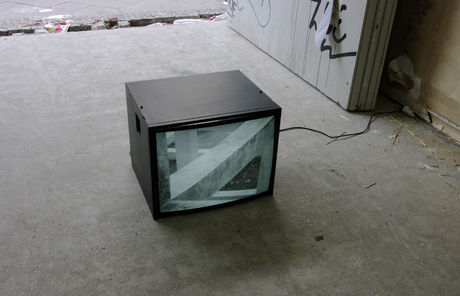


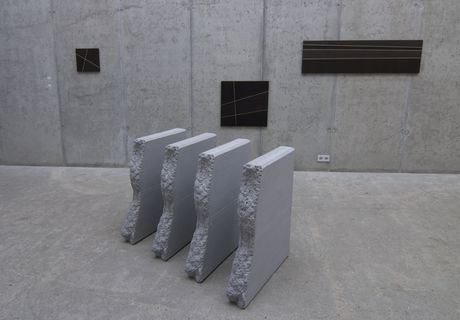



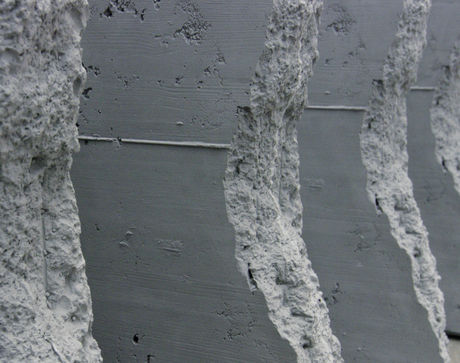




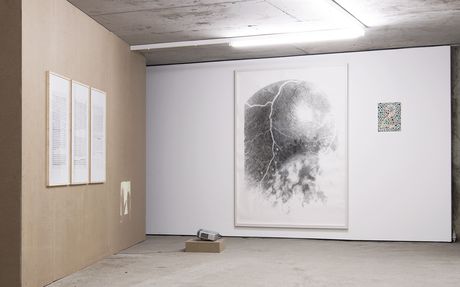



![Mario Pfeifer, Yet Untitled [„Pieces of Nature“], 2008, Video, 11‘30 Mario Pfeifer, Yet Untitled [„Pieces of Nature“], 2008, Video, 11‘30](../../imagecache/c7/1c/c71c29f8fc6a9967e8fc4db28ae7ed6c.jpg)
![Mario Pfeifer, Yet Untitled [„Pieces of Nature“], 2008, Video, 11‘30 Mario Pfeifer, Yet Untitled [„Pieces of Nature“], 2008, Video, 11‘30](../../imagecache/f7/9c/f79c86f377aa9960e2b910da9aad3cbf.jpg)
![Mario Pfeifer, Yet Untitled [„Pieces of Nature“], 2008, Video, 11‘30 Mario Pfeifer, Yet Untitled [„Pieces of Nature“], 2008, Video, 11‘30](../../imagecache/f4/f8/f4f894e3928f8ea3608187de79b14c17.jpg)
![Mario Pfeifer, Yet Untitled [„Pieces of Nature“], 2008, Video, 11‘30 Mario Pfeifer, Yet Untitled [„Pieces of Nature“], 2008, Video, 11‘30](../../imagecache/11/f6/11f672139788addcaccd7071abaf749c.jpg)
